#Tang Hui
Explore tagged Tumblr posts
Text
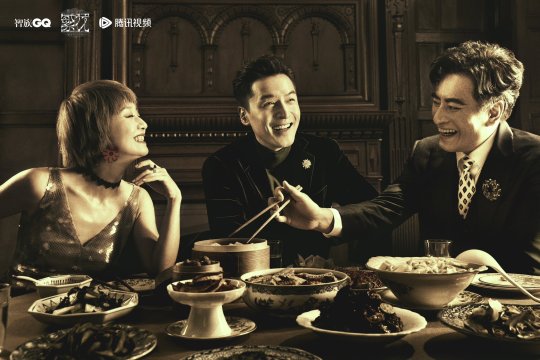
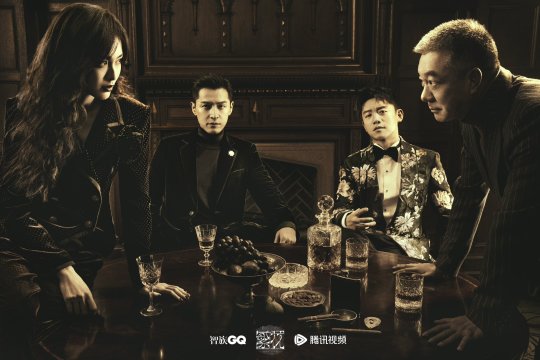
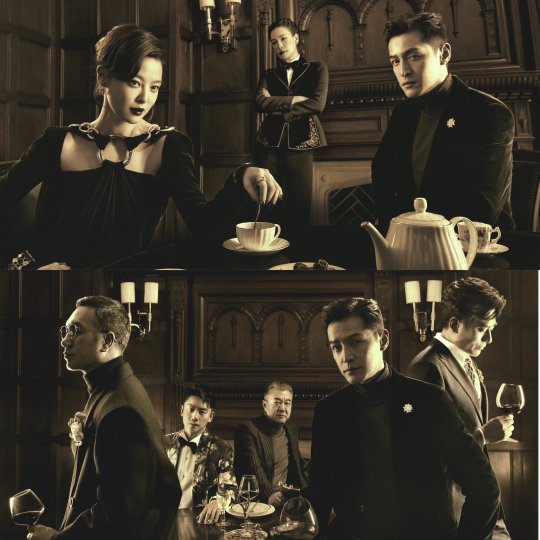
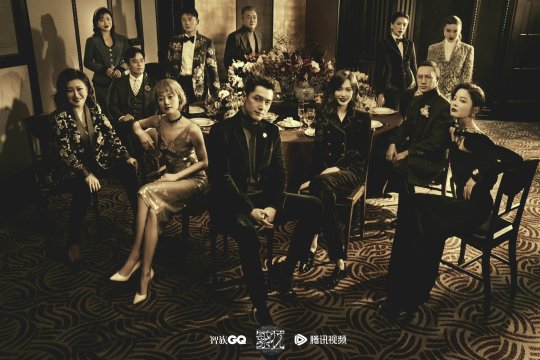
Blossoms Shanghai’s Hu Ge, Ma Yili, Tang Yan, Zheng Kai, Chen Long, Dong Yong, Huang Jue, Zeng Mei Hui Zi, Fan Tiantian, Tong Chenjie & Wang Ju for GQ China
#hu ge#ma yili#tang yan#zheng kai#chen long#dong yong#huang jue#zeng mei hui zi#fan tiantian#tong chenjie#wang ju#fashion#blossoms shanghai#gq china
18 notes
·
View notes
Text
Zachary Ying and the Dragon Emperor | Book Review
Author: Xiran Jay Zhao
Genre: Middle-Grade Fantasy, Chinese Mythology
Publisher: Margaret K. McElderry Books
Release Date: 10/05/2022
Rating: 4/5 🌟🌟🌟🌟
Synopsis:
Zachary Ying never had many opportunities to learn about his Chinese heritage. His single mom was busy enough making sure they got by, and his schools never taught anything except Western history and myths. So Zack is woefully unprepared when he discovers he was born to host the spirit of the First Emperor of China for a vital mission: sealing the leaking portal to the Chinese underworld before the upcoming Ghost Month blows it wide open. The mission takes an immediate wrong turn when the First Emperor botches his attempt to possess Zack’s body and binds to Zack’s AR gaming headset instead, leading to a battle where Zack’s mom’s soul gets taken by demons. Now, with one of history’s most infamous tyrants yapping in his headset, Zack must journey across China to heist magical artifacts and defeat figures from history and myth, all while learning to wield the emperor’s incredible water dragon powers. And if Zack can’t finish the mission in time, the spirits of the underworld will flood into the mortal realm, and he could lose his mom forever.
Review:
tw//: bullying.
First off, I loved this book; I seriously loved it! But I gotta admit that it had a significant pacing problem. It threw you into the action all willy-nilly, then did a poor job explaining things with info-dump after info-dump. However, I believe that’s very intentional since this book is inspired by Shonen anime! Anywho, I so loved how visual this book was, how I could just see almost everything Zack and the gang were doing from the vivid descriptions. I love how it pays homage to Yugi-oh!! And I adore how well it explored the different identities that makeup who Zack is. It was a bit too on the nose regarding politics, but then again, with the way most adults lack reading comprehension and critical thinking skills these days, I think it’s good that a middle grade novel is being very straightforward with its message.

#booknerd#bookworm#booklover#bookstagram#books#book review#middle grade#fantasy#chinese mythology#zachary ying and the dragon emperor#zachary ying#xiran jay zhao#hui muslim#wu zetian#tang taizong#qin shi huang#the dragon emperor
10 notes
·
View notes
Text
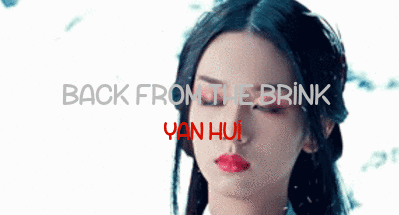

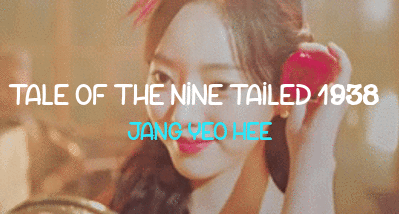






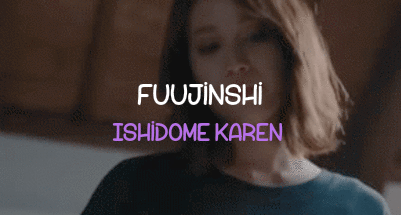
My Top Female Characters of 2023
#goodbye my princess#ming yue#my dear donovan#savitree#tale of the nine tailed 1938#jang yeo hee#destined with you#ma eun young#a familiar stranger#yuan bao#my lethal man#tang lin#the forbidden marriage#sung hwa yoon#moving#lee mi hyun#back from the brink#yan hui#my top female characters of 2023#cdrama#chinese drama#kdrama#korean drama#jdrama#japan drama#thai drama
7 notes
·
View notes
Text
《回乡偶书》- 贺知章
回乡偶书, Impressions on Returning Home, by He Zhi Zhang 贺知章, translated with pinyin and vocabulary
huí xiāng ǒu shū – hè zhī zhāng (唐 – táng) 少小离家老大回, 乡音无改鬓毛衰。 儿童相见不相识, 笑问���从何处来。 PINYIN: Huí xiāng ǒu shū Shǎo xiǎo lí jiā lǎo dà huí, Xiāng yīn wú gǎi bìn máo cuī. ér tóng xiāng jiàn bù xiāng shí, Xiào wèn kè cóng hé chù lái. ENG: Impressions on Returning Home Young when I left home, old as I return, My dialect has not yet changed, but the hair on my temples is thinning. Children meet me not…
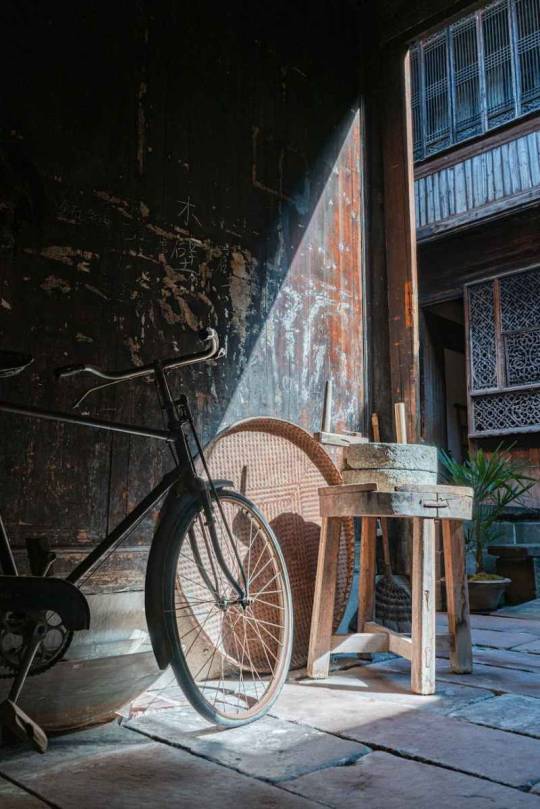
View On WordPress
#chinese culture#chinese history#chinese poem#chinese poetry#诗词#诗歌#贺知章#he zhi zhang#he zhi zhang poem#hui xiang ou shu#learn chinese poetry#poems about home#poems about returning home#poetry#quotes about home#returning home#tang dynasty#tang dynasty poem#回乡偶书#回乡偶书 poem
2 notes
·
View notes
Text
[China] Tries to restore the famous dance during the China Tang and Song Dynasties< Zhezhi Dance/柘枝舞>
The blogger tried to restore the dance by referring to the movements in many related reliefs and murals from the Tang Dynasty to the Five Dynasties, combined with the Tang Dynasty records of the dance.
< Zhezhi Dance/柘枝舞>
is a type of well-known "Jian dance/健舞"from the Tang and Song dynasties. The ancient "Yudiao" (羽调) has a piece titled "Zhezhi Qu" (柘枝曲), and the Shang Diao (商调) has "Qu Zhezhi" (屈柘枝), from which the dance takes its name. It originated from Talas (a region in modern-day Kazakhstan, once under the jurisdiction of the Tang Dynasty's Anxi Protectorate). Initially, it was a solo dance performed by women. The most popular form during the Tang Dynasty was the "Double Zhezhi Dance/《双柘枝舞》," performed by two young girls wearing red and purple silk robes, with Hu-style(胡人/Foreigner style) hats adorned with golden bells. They would dance in time with the beat of the Hu drums, their slender waists swaying in harmony with the ringing of the bells and the dance movements, creating a pleasant sound as they turned.
Zhang Xiaobiao/章孝标's poem 《Zhezhi /柘枝》includes the line "Zhezhi first appears, the drumbeat calls," and Bai Juyi/白居易's poem 《Zhezhi Ji/柘枝妓》 has the line "Three drumbeats strike, urging the painting drum." The dance features rich variations in movement, being both vigorous and lively, as well as graceful and charming. The sleeves of the dancer's costume alternately droop and lift, as described in the poem with phrases like "lifting sleeves amidst the busy drum" and "long sleeves sweeping into the embroidered train." The rapid and intricate footwork causes the golden bells worn by the dancer to produce a clear, crisp sound. Spectators are amazed by the dance's lightness and flexibility. As the dance nears its end, there is a deep bending motion of the waist.
-------- Annotation >Yudiao(羽调) & Shang Diao (商调)<
The Chinese pentatonic scale, or pentatonic mode, is a scale system commonly used in Chinese music. Ancient China named these five notes Gong, Shang, Jiao, Zheng, and Yu(宫、商、角jué、徵zhǐ、羽) in sequence, which is roughly equivalent to the singing notes in Western music notation. Noun (do), (re), (mi), (sol), (la).
--------
In the Song Dynasty, it evolved into a group dance, and the official music included "Zhezhi Troupe" (柘枝队). There were many variations of the dance in the past, though most of the original songs were lost by the Song period. Despite this, the dance still flourished. Since the Yuan Dynasty, the dance itself disappeared, and the name "Zhezhi Ling" (柘枝令) only survives in the lyrics and music.
Along with the Hu Xuan Dance (胡旋舞) and Hu Teng Dance (胡腾舞), Zhezhi Dance was one of the three major Western Region dance styles that were immensely popular during the Tang Dynasty, often performed to welcome foreign envoys gathering in Chang'an China.
【Historical Artifact Reference】:
China Five Dynasties and Ten Kingdoms Period Brick Carving Relics from Tomb Of Feng Hui 冯晖墓

< "Jian dance/健舞 & Ruan Wu/软舞>
Jianwu (健舞) is one of the categories of court music and dance in the Tang Dynasty, specifically referring to a type of martial dance. It signifies a dance style characterized by vigorous, forceful movements and a lively rhythm, in contrast to the "soft dance" (软舞).
The Tang people categorized the various small-scale entertainment dances and musical performances popular in the palace, noble households, and among the general populace based on their stylistic characteristics into "soft dance" and "martial dance" (jianwu). Originally folk dances and Hu music, these were later reorganized and adapted by the court's music and dance troupes, often performed at feasts. The music for these dances typically used elaborate wind instruments and fast string instruments. According to the "Fangfang Ji" (放坊记) and "Yuefu Zalu" (乐府杂录), soft dances included pieces like "A Liao" (阿辽), "Jianqi" (剑器), "Zhezhi" (柘枝), "Hu Xuan" (胡旋), "Hu Teng" (胡腾), "Huang Zhuang" (黄獐), "Da Weizhou" (大渭州), "Fu Lin" (拂菻), "Damo Zhi" (达摩支), and "Ling Da" (棱大).
Ruan Wu(soft dance)/软舞
Ruanwu (软舞) specifically referring to a type of graceful and elegant dance. It signifies a dance style characterized by graceful, delicate, and flowing movements, in contrast to "martial dance" (健舞).
The Tang people categorized the various small-scale entertainment dances and musical performances popular in the palace, noble households, and among the general populace based on their stylistic characteristics into "soft dance" and "martial dance" (jianwu). These dances, originally folk dances, were adapted by the court's music and dance troupes and were often performed at feasts. The movements of soft dance were light, graceful, and elegant, resembling either a startled swan or a flying swallow. According to the "Yuefu Zalu" (乐府杂录), the main soft dances included "Liangzhou" (凉州), "Lüyao" (绿腰), "Suhexiang" (苏合香), "Qu Zhezhi" (屈柘), "Tuan Yuan Xuan" (团圆璇), "Ganzhou" (甘州), "Chui Shou Luo" (垂手罗), "Hui Bo Yue" (回波乐), "Lanling Wang" (兰陵王), "Chun Ying Zhuan" (春莺啭), "Ban She Qu" (半社渠), "Jie Xi" (借席), and "Wu Ye Ti" (乌夜啼).
Next time I will make a post to share to the Tang Dynasty "soft dance/软舞" restored by Choreographer:@李诗荟
------
youtube
"Taiping Yue": Ji《太平乐》· 急 (Great Peace Music: Quick), an instrumental movement in the Dashi mode (Chinese: Dashi diao, 大食调, equivalent to the Mixolydian mode on E), dating back to China's Tang Dynasty, as reconstructed by Bilibili user "männlichkeit," c. January 24, 2020. As the final movement of the suite "Taiping Yue," this piece is known by the title "Hehuan Yan" (合欢盐, Happy Together Song). According to musicologist Steven G. Nelson, this suite probably had its origins as a military dance, perhaps of the pozhen yue (破阵乐, literally "destroying the formations") type, in Tang China, which was transmitted to the Japanese court by the early 8th century, then arranged into a suite in the Japanese court of the mid-9th century.
In the context of the piece's title, the term "yan" (塩), which usually means "salt" in Chinese, refers to a particular type of poetic song popular during the Tang period (a synonym for "qu" 曲, meaning "piece"); "yïr" or "yır" means "song" in Turkic languages.
This reconstruction is based primarily on the version of this piece as found in "Sango Yōroku"『三五要録』, the most important and extensive collection of Tang-era scores for 4-string pipa; this collection was compiled by the Japanese nobleman Fujiwara no Moronaga (藤原師長, 1138-1192) shortly after 1177 (c. 1180), during the late Heian period (794-1185).
In Japan's tradition of Tōgaku (唐楽, court music of Chinese origin), this dance suite movement is called "Taiheiraku": Kyū《太平楽》· 急 (たいへいらく:きゅう), with the movement title being pronounced "Gakka-en"《合歡塩》(がっかえん). Its mode is called Taishiki-chō (大食調) in Japanese.
__________________
🧚🏻♀️Dancer & Choreographer:@李诗荟
👗Hanfu:@君子山岚
Venue Provider:@包意凡
Lighting Design:@大彤寶殿的彤寶
Music :@männlichkeit(BiliBili)/@dbadagna(Youtube)
🔗Full Video on Xiaohongshu App:https://www.xiaohongshu.com/explore/674995190000000008005fc6?
__________________
#chinese hanfu#ancient dance#dance history#Tang Dynasty#Jian dance/健舞#Zhezhi Dance/柘枝舞#李诗荟#china#chinese#Dance#Choreographer#five dynasties and ten kingdoms period#Youtube
467 notes
·
View notes
Text
FILO!🇵🇭Caleb headcanons

→ LOLL COULDN'T HELP MYSELF. Saw a tiktok post and somebody said to make a fanfic so here I am making one bcs I also need some Filo!Caleb yk snjxbsjdhs ewan ko pre nadedelulu ako HAHDGAHSHHAHA ANYWAYS HOPE U GUYS ENJOY!! [can't believe this is my tumblr debut www]



Caleb Lawrence G. Santos
• WHAHSHAHAH THIS IS HIS FULL NAME IN MY HEAD I THOUGHT REALLY HARD ABOUT IT.
• You two have been together for who knows how long, you're practically used to each other's presence. You also have been going to the same school for years now, how lucky!
• He likes messing with you all the time. It's one of his favorite hobbies lol. The type to tap you on your shoulder and pretending he didn't when you turn to look at him.
• whenever he get you something cold to drink he'd hold it against her cheek, laughing at your reaction.
"Ah! Tangina naman, Caleb!!"
"You're so dramatic~"
• Calls you "OA" and all that. He receives a slap on his shoulder from you as he starts laughing and pain.
• sometimes you ignore him because of the shit he pulls or on purpose just to get under his skin. He tries to make it up to you by buying more snacks, pleading for you to look at him.
"Huy.." He'd pout, poking on your arm.
• You turn away, still not paying him any attention, much to his dismay. But when he really wants you to look at him he'd start poking at your sides resorting to tickling. You soon yield, finally looking at him, so he starts teasing you again.
"You're so mean! Ignoring me on purpose."
"Fuck you!! Nakakairita ka!"
• you say in between laughs from his tickling.
• Between the two of you, you're more prone to cursing than he is, not even bothering to go easy on him when you guys banter. You call him all sorts of names from "Tanga" to "Gago" and etc. While his names for you usually range from "Pipsqueak" and "Pandak" or whatever pisses you off.
"Gago ka ba?"
"Sorry na."
• He's not sorry at all lol
The rest of this is pretty just more hcs and word vomit hehehehehe
• The type to keep hair bands on his wrist in case you need to tie your hair.
• When you were kids, sinusundo ka lagi sa bahay nyo pag trip nya maglaro sa labas.
• "Best in science" ahh awardee lol, helps you in your homework, LOVES to help you with your homework actually cause he gets to spend time with you. Especially when you're the type to not immediately get things right when learning about new stuff. He acts like an asshole telling you this is the "7th time" he's explained you what the lesson is, oh but how he loves the way you furrow your eyebrows in frustration when you still don't get it. Kasi tang ina ang cute mo!!
• HONESTLY I JUST SAW THIS IN THAT TIKTOK'S COMMENT SECTION TOO BUT I CAN SEE YOU TEASING HIM CALLING HIM "Kuya Caloy" LMFAOOO
• In highschool, he teases you sometimes, asking why you don't call him "Kuya" anymore when you were so adamant about calling him that your whole childhood. You try to make him drop it but he just keeps going on and on about it. He's such an ass!!
• Whenever you do want him to quit being such an annoying prick you'd threaten to tell his grandmother about how he's mistreating you. It's an overstatement but he knows Gran would believe you 100% so he sighs in defeat allowing you to win. You totally use that tactic in 70% of your arguments.
• Doesn't like playing basketball competitively, but the moment you urge him to try, he'd sign up immediately.
• Definitely worth seeing you with a banner, cheering him on as you went full on fangirl everytime he scores. Fuck it just makes him want to fangirl at you.
• Asks you for a prize since pinanalo nya school nyo and you ask him to lean down and close his eyes. He does so, his heart beating fast. Were you gonna kiss him? Gagi, weh?? Kukunin na ba sya ni lord?? He could explode!!
• You press a cold drink against his cheek making him flinch as his eyes shot wide at you.
"Inom well~" You tease, grinning at him.
• He swore he saw heaven when you pulled that shit on him.

THATS ALL SO FARRR AAAAAAA. Maybe I'll make a part 2 when inspiration strikes me again!!
#love and deepspace caleb#love and deepspace#lads#lads caleb#lnds caleb#caleb x reader#caleb#caleb x reader love and deepspace#lads caleb x reader#x reader#caleb x y/n#y/n#mc#caleb x mc#caleb x you#you#reader#love and deepspace x reader#love and deepspace fanfiction#fanfiction#otome#otome x reader#otome lads#otome lnds#lnds#lnds x reader#caleb hcs#caleb headcanons#Caleb love and deepspace headcanons#Filipino Caleb
221 notes
·
View notes
Text


Hu Qing Yu Tang 胡庆余堂 is a historically significant Chinese pharmaceutical company.
Founded by Hu Xueyan with the “Hui architectural style” 徽派建筑 from his hometown Anhui province in 1874, alongside West Lake in Hangzhou, Zhejiang province. The drugstore opened in 1878 and is now a TCM museum.
Hu Xueyan’s former residence, built in 1875, and also showcasing Hui-style architecture (https://www.tumblr.com/sinoheritage/773453677790986240/traditional-hui-style-architecture-%E5%BE%BD%E6%B4%BE%E5%BB%BA%E7%AD%91-native-to)


#china#chinese heritage#tcm#traditional chinese medicine#chinese culture#chinese#people’s republic of china#Jiangnan#eastern China#chinese architecture#residences#prc#courtyards#hui architecture#hui style architecture#anhui#Hangzhou#huizhou#Zhejiang#chinese courtyards#Chinese houses#east asia#east China#🇨🇳#traditional medicine
195 notes
·
View notes
Note
Could you tell us more about fox spirits? or what you know about them? Since the Kitsune is the fox spirit that people popularize the most, information on the Huli Jing is difficult to search for.
*Deep Breath*
Man, oh man. On one hand, I am fascinated by fox spirits, on the other hand, entire books have been written on them (in Chinese), and there are a staggering amount of Qing dynasty fox tales in Yuewei Caotang Biji (阅微草堂笔记) and Liaozhai Zhiyi,(聊斋志异) it's hard to know where to start.
[Previous ask about nine-tailed foxes, the duality of auspicious and demonic, and Su Daji]
Fox spirits, like any other yaoguais, is an animal that has lived long enough and absorbed enough Qi to gain sentience. Through cultivation, they can eventually gain a human form.
According to Tang folklore, they need to wear a human skull on their head while bowing to the Dipper stars/moon, without the skull falling off, in order to transform into a human.
However, foxes are also talented shapeshifters and tricksters who have this reputation for seducing humans, male and female alike.
In earlier legends, that's just their nature, but Ming and Qing tales expanded on that, stating foxes have sex with human to drain their Qi or life force, because they need those to form an Inner Core——an orb of solidified Qi that contains all of their cultivation and life force.
(Usually, it's female foxes seducing human men, because they need some of that sweet, sweet Yang force to compliment their Yin.)
(But some Ming folklore collection said that male foxes also go after guys in the guise of women, while in others, male foxes are just seducers of women.)
(Oh, and there are actual lesbian foxes in Qing legends. Like Feng Sanniang from Liaozhai Zhiyi.)
But one must keep in mind that foxes, like all yaoguais, are not inherently good or evil. For every sexual predator and Daji-like temptress, there exists a graceful scholar, a chill friend, or a lovestruck girl (Liaozhai is full of human-fox romances).
Like, there is a tale in Yuewei Caotang Biji that's just a guy chatting with his 50-60 looking fox associate about how foxes cultivate. When asked why he's so candid about this stuff, he really sums up it best:
"There are good and bad ones among our kind, just like humans. If you humans don't shy away from speaking of human evil, why should I?"
He then proceeds to talk about how legit fox cultivators collect the essence of sun and moon like any regular Daoists, while the ones that seduce human and suck away their life forces are taking a shortcut and inviting heavenly retribution in the form of thunderbolts.
Other Qing legends introduce the hilarious concept that all aspiring foxes must pass an exam organized by the Lady of Mt. Tai, to, well, earn their cultivation permit. Not even foxes are free from the clutches of imperial examinations, it seems!
Still, their old auspicious association does give rise to the archetype of "cultivator/sorcerer foxes", as well as a higher chance of recruitment into the Celestial Bureaucracy.
Which might explain why foxes were so frequently venerated in popular religion. Like, northern China has this thing called the "Five Great Immortals" (五大仙), five species of cultivated animals that people worship:
Hu (胡), Foxes
Huang (黄), Weasels
Bai (白), Hedgehogs
Liu (柳), Snakes
Hui (灰), Rats
When I travelled to the city of Pingyao, Shanxi last summer, one of the sites I visited had a Yuan dynasty building, and its second level is a shrine dedicated to the "Fox Immortal", guardian of the imperial official's seal.
Fun fact: fox spirits have a habit of impersonating Buddhas and Bodhisattvas in Tang dynasty legends. Manjusri and Maitreya seems to be the most popular choice, and in 三遂平��传, a Ming dynasty novel, "Sagely Old Lady"(圣姑姑) the heavenly fox also impersonates Bodhisattva Samantabhadra.
So imagine my surprise when I actually encountered some foxes next to a highway during the same trip, while visiting Mt. Wutai, Manjusri's sacred mountain!


366 notes
·
View notes
Text
Main Types of Chinese Opera pt.2

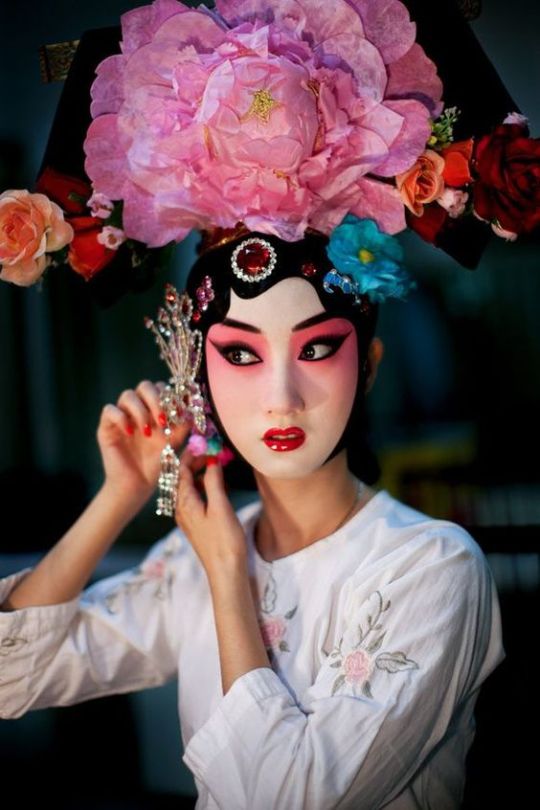
I'm back with the 2nd part about the main types of Chinese Opera's, and this post will feature the Cantonese Opera, Sichuan Opera, and the Yu Opera!
Cantonese Opera 粤剧 (Yuèjù)
This is a popular form of opera origination from Guangdong, and especially popular in Hong Kong, Macau and other regions. Cantonese opera shares quite a few similarities with other types of opera, and includes music, aerobatics, acting and other common feautures, with many stories being based on Chinese classics and historical events. The 4 main character roles remain the same (生, 旦, 净,丑), but their cantonese names are slightly different. () There are 2 types of Cantonese Opera plays, martial arts 武 which primarily feature war and conflict, with the main characters being warriors. The 2nd type is "culture" 文, which are calmer and slower plays, with more emotional aspects.
Of course, there are quite a few specifics that set it apart, one of them being the speech element. Cantonese Opera uses Mandarin but also the 中州 (Zhōngzhōu) dialect, which was a cross-regional dialect that was situated between Nanjing, Zhongyuan, Jianghuai, Huguang, and Sichuan in the Ming and Qing Dynasties. Currently it's not really in use anymore other than in some Chinese operas as it was abandoned in the 1930s. Cantonese Opera plays can also be classified into theatrical or singing performances, as the theatrical style is either western music or Chinese music, whereas the singing style is always western style.
Quite a lot of Cantonese Opera's were made into tv shows/series, musicals and movies, especially 唐涤生 Tang Ti-sheng, a famous Cantonese opera playwright. Some of his works include:
牡丹亭惊梦/The Peony Pavilion (Mǔdān tíng jīng mèng)
红楼梦/Dream of the Red Chamber(Hónglóumèng)
穿金宝扇/Wearing a Gold Fan (Chuān jīnbǎo shàn)
蝶影红梨记/ The story of the Butterfly and the Red Pear (Dié yǐng hóng lí jì)


Sichuan Opera 川剧 (Chuānjù)
The Sichuan Opera originates from 1700s Sichuan province, with 5 distinct styles. This is the opera famous for the quick mask change/face change, known as Bian Lian 变脸 (Biànliǎn) which you may have seen as there have been quite a few videos of this fascinating technique.
It is said that over 100 plays are performed in the Sichuan opera, with classic stories being particularly popular, some ranging all the way back to the Song dynasty. Currently both ancient and modern stories are performed, but the old stories still remain constant.
The Sichuan Opera has quite a unique music style, strong with a clear rhythm, and with the wind and percussion instruments being the most significant part of the music ensemble. Sichuan Opera is known for being the most similar to an actual play than any other Chinese Opera, being well-known for it's more free form and singing.
However, Sichuan Opera has 5 distinct styles:
1.Gaoqiang 高腔 (Gāoqiāng) This is the oldest form of Sichuan Opera, known for high-pitched singing and very little if no musical accompaniment, with just the drums, gongs and a clapper. The singing style is folk, with the Sichuan dialect and other local colloquial expressions.
2. Huqin 胡琴 (Húqín) This style became known during Qing dynasty, developing from the Hui and Han tunes, but it still has its own distinct features such as being performed using the Sichuan dialect. It's name is particularly interesting as Huqins name comes from the Huqin, a traditional Chinese instrument which also features in Sichuan Opera.
3. Danxi 弹戏 (Dàn xì) Danxi is actually a variation of Qingqiang, which was introduced later on after Qingqiang (More on this later!) first emerged in Sichuan. Danxi's origin story varies, but what is known is that the Shaanxi/Qingqiang opera slowly started to adopt Sichuan Opera's features and later on it combined with other Sichuan Opera styles to form Danxi. Danxi has two types of mysic, one of them being joy and happiness and the other being sadness and despair.
4. Kunqiang 昆腔 (Kūnqiāng) If the name sounds oddly familiar, you may remember the previously mentioned Kunqu opera, which like it's name, developed from the original Kunqu opera and slowly drifted over from Jiangsu to Sichuan during the Ming Dynasty. The musical style underwent some changes, such as adopting the local Sichuan dialect and combined other vocal styles such as Gaoqiang, Huqing into the now known Kunqiang style.
5. Dengdiao 灯调 (Dēngdiào) Dengdiao actually comes from the Lantern Festival, and incorporates the local Sichuan folk singing, dancing and customs. The music has a distinct rhythm and is quite short, with an upbeat vibe. The Huqin instrument is used in addition to string instruments as accompaniment.
Yu Opera 豫剧 (Yùjù)
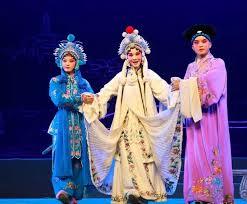
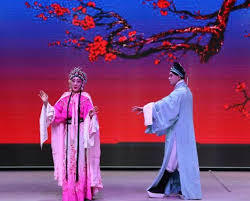
The Yu Opera is said to have originated in the early Ming Dynasty, and later as it gained popularity it spread across the nation, with a strong presence in other regions such as Shandong, Hubei, Shanxi, Beijing and many other places. Despite the name, it's actually not confirmed as to whether the Yu opera is actually from Henan as there are many different and opposing theories. Nonetheless, it's still quite popular and has been included in China's national intangible cultural heritage.
Like many other opera types, the Yu opera also has the main roles of 生 (shēng), 旦 (dàn), 净 (Jìng), 丑 (chǒu) with their respective sub-types, and a noteable "四功五法" (Sì gōng wǔ fǎ) art form, translated as 4 Skills and 5 Methods. The skills include singing, reciting, acting, and fighting (dancing), with the 5 methods referring to the hand, eye, body, method, and step movements.
There are actually quite a few different Yu Opera genres with the main ones being:
陈派 / Chen School (Chénpài) - known for an elegant and smooth movement style and the 青衣 (Qīngyī) characters (virtuous female)
常派 / Chang School (Chángpài) - focuses on strong emotional performance and heroic characters such as Mulan
崔派 / Cui School (Cuīpài) - has a lighter and flowing tone, with a focus on elegance
马派 / Ma School (Mǎpài) - focuses on a calm and more mature style, with the main characters including 老旦 (Lǎodàn) and other more mature female characters
阎派 / Yan School (Yánpài) - includes dramatic and emotional styles with complicated characters
桑派 / Sang School (Sāngpài) - this is quite an interesting genre as it includes more sad and romantic performances in contrast to others
唐派 / Tang School (Tángpài) - in contrast, this genre has a more male focus, with many characters such as 老生 (Lǎoshēng) and other older male characters.
张派 / Zhang School (Zhāngpài) - known for strong and dynamic vocals and heroic characters
#红楼梦#yu opera#qingqiang#chinese#chinese opera#chinese culture#theatre#chinese theatre#slavic roots western mind#music#chinese music#china#sichuan#sichuan opera#cantonese#cantonese opera#henan#yuju
21 notes
·
View notes
Text

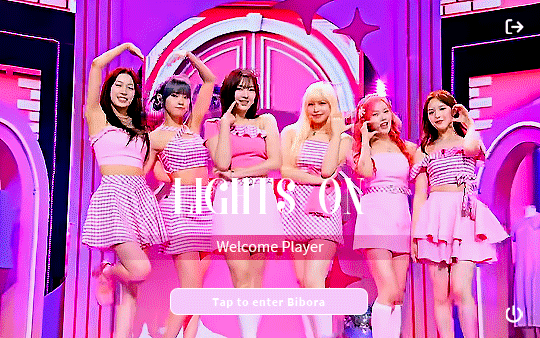
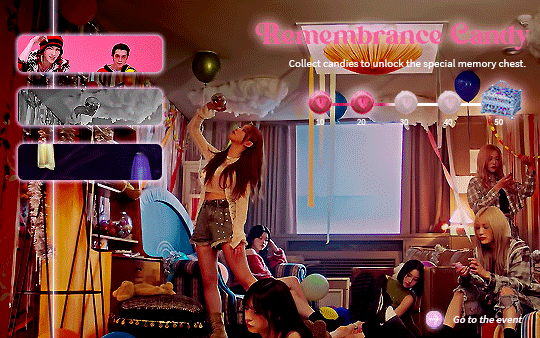

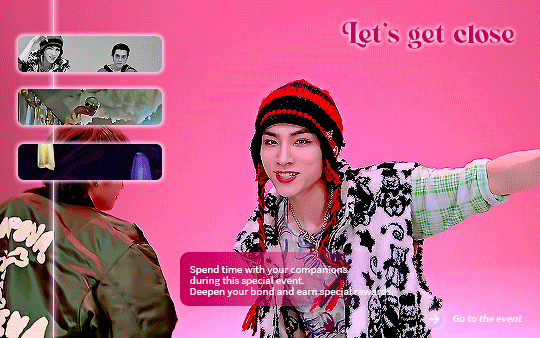

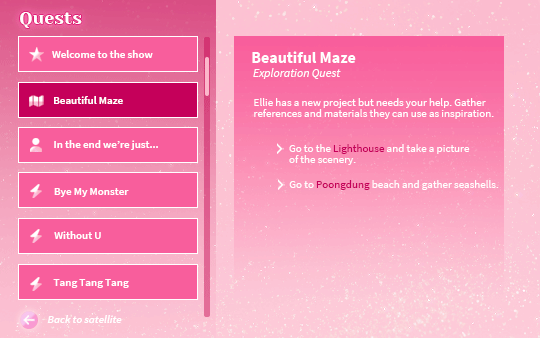
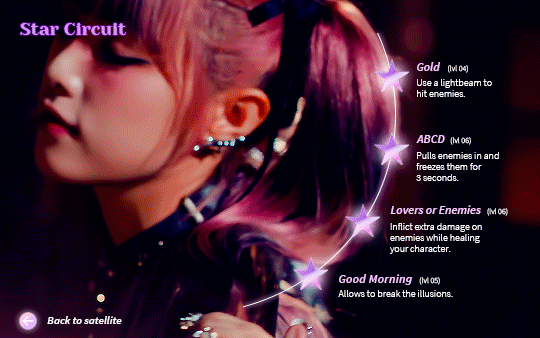

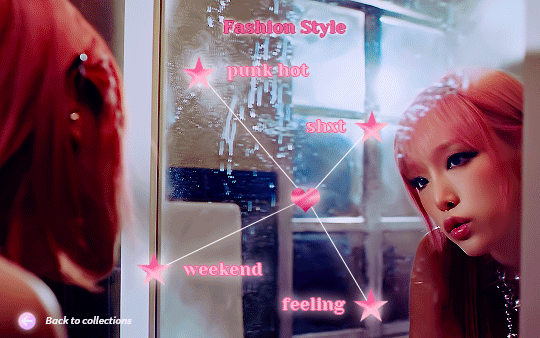
Lights On ✨💫 aka my fave releases of 2024
Featuring, in order of appearance:
Welcome to the show - Day6 // Girls Night - Loossemble // November - Lovelyz // Lights On - Weeekly // Bibora - SF9 // Cosmic - Red Velvet // Shooting Star - Kep1er // Remembrance Candy - Billlie // Give me that - WayV // On My Bike - Purple Kiss // Hmm Bop - Hui // Algorithm - Chungha // Beautiful Maze - Drippin // Lighthouse - Tempest // Poondung - Cignature // In the end we're just - Youha // Bye My Monster - ONF // Without U - Seola // Tang Tang Tang - 90tan // Gold - Itzy // ABDC - Nayeon // Lovers or Enemies - CIX // Good Morning - Yena // Everglow - Kino // Justice - Dreamcatcher // Navy Blue - Wooseok // Sabotage - Kwon Eunbi // Fashion Style - Kino // Punk Hot - 1Chu // Shxt - Ryu Sujeong // Weekend - Drippin // Feeling - Vahn
tagging: @atlantis-area, @briankang, @dreamaze, @hoforwonho, @kimsuyeon, @jinjjayo, @moonsua, @pixypunch, @reveloser, @suhyeos, @sungtaro, @2minsungz
read more? you want to know more? nerd. but yes more you shall know because this was a project for sure. first thing you'll notice is i made only one post instead of my usual two because i did not have it in me to make this twice, it also gives me more options to play with so yay. there is also more than one song per artist and more than 10, we're doing all kinds of wild things this time. i tried to give more importance to songs that ranked higher but also what fitted best with the concept so if you're curious, here's how the songs would place in some sort of vague tiers (no ranking within the tiers):
Song of the year: Lights On by Weeekly Tier 1: ABCD (Nayeon), Good Morning (Yena), Justice (Dreamcatcher), On My Bike (Purple Kiss), Remembrance Candy (Billlie), Cosmic (Red Velvet), Hmm Bop (Hui), Navy Blue (Wooseok), Everglow (Kino), Give Me That (WayV), Welcome To The Show (Day6), Lovers or Enemies (CIX) Tier 2: Sabotage (Kwon Eunbi), Gold (Itzy), Algorithm (Chungha), Girl's Night (Loossemble), Poongdung (Cignature), Fashion Style (Kino), Bibora (SF9), Lighthouse (Tempest), Beautiful Maze (Drippin) Tier 3: November (Lovelyz), Punk Hot (1Chu), In The End We're Just (Youha), Shxt (Sujeong), Shooting Star (Kep1er), Without U (Seola), Tang Tang Tang (90tan), Bye My Monster (ONF), Weekend (Drippin), Feeling (Vahn)
so i guess if you really want to know my most faves: lights on and tier 1. as far as the concept goes well...it's a gacha. i am picturing it as an open-world action rpg with an emphasis on storytelling. Yena is acting here as the default mc because she just gets it. you'd have various quests to complete with combat, puzzles and mini-games. the actual gacha part would be outfits and characters (we have to make money somehow sorry), weapons could be switched up as you wish and unlocked through quests.
#i don't think i've seen any of yours but if you posted one i have not seen it for some reason so feel free to send it to me#ultkpopnetwork#kpopccc#kpopedit#usermairin#foraddy#oorieri#melontrack#in case the mention doesn't show up#*#*gif#*gfx
50 notes
·
View notes
Text


Traditional Hanfu Robe
From: Chong Hui Han Tang
74 notes
·
View notes
Text
Bo Tang Reincarnates as a Woman AU (pt 1)
I've thought about this a ton more since I first posted and might write something for it...maybe...I haven't written anything in so long lmao idk if I remember how esp cause I'm struggling a bit with the transition of reincarnated-baby-Bo who has no sense of self (baby) to adolescent-Bo who realizes he's in a woman's body now and What Does He Do Now??
Bo, like, reincarnates-reincarnates. As a baby. Technically, he's older than Cheong Myeong this time around (only counting this life) which is a TRIP
"Dongsaeng-nim, didn't anyone ever tell you to respect your elders, I know the venerable masters of Mount Hua would NEVER allow their students the impropriety..."
"Bo-ya, this venerable master is still your elder and will still gladly teach you about respecting YOUR elders, a Lady Tang or not"
Jan Tang and Bo's reincarnation (I've been calling her Bao Tang, using the character for "treasure") are twins
There's this whole thing where for a while, Bo is VERY UPSET thinking that he was supposed to be reincarnated in Jan's body, there's a lot of angst, but this is also where Bo starts to kind of notice his internalize misogyny - he gets this moment of thinking "Wait but what does it matter what body I reincarnated to? I can still DO things, I'm still a better martial artist than, like, ALL of Bao Tang's cousins!" and then this thinking slowly starts to encompass all other women around him
Fun fact tho, that's the body he's supposed to be in. It is as the ancestors intended. (Because he ticked them off and they felt this was a suitable punishment)
Also, kids start developing a sense of "self" at just over a year old - like, they can look in a mirror and be like "oh it a person" and I just keep imagining little 16 month old Bo looking in the mirror, seeing himself as Bao and FREAKING OUT
The Tangs have to remove all the mirrors in the main house, it continues until Bao is like 4 and can actually start conceptualizing WHAT she's seeing and WHY is doesn't feel right
It isn't really until Bao's about 10 that she CONCIOUSLY realizes that she's actually Bo Tang - or that she starts recalling his memories VIVIDLY
There's a weird period where Bo is then thinking, wait, am I Bao Tang? Am I Bo Tang? What's going on? Because Bo grew up as Bao. He has all her memories AND his past memories and though the memories as Bo are stronger, is that only because he's an adult? Did he kill the actual Bao? Supplant her soul? Could a body retain memories?
Basically, Bo hits that middle-school crisis of self earlier than most; it's still about as pretty as that tho (which is to say, not at all)
Admist all of this, she's also showing an alarming aptitude for the Tang style arts (especially the hidden weapons) and Gun-Ak is suuuuuuuper torn because yeah Jan's good, but Bao is BETTER
The elders sense this weakness. They will not allow it. So begins the dance of power a LOT earlier - and Bao's life is subtly threatened whenever they want to put Gun-Ak in his place
Which Gun-Ak is susceptible to, because tho he doesn't think much of a "woman's place" he does love his daughter - more importantly, he knows his lady wife loves their daughter FEROCIOUSLY, and well, happy wife happy life, right?
Bo's new mom, calling her Fen Hui in my head, is Not About her daughter being used as a hostage against Gun-Ak and Even Less About Gun-Ak being so passive with the elders
She was also raised for bigger and better things than being a broodmare and she thinks it's about time she reminded her lord husband about how she was the seal on a deal the Tangs struck with her family for their oh-so-important exotic herbs
Gun-Ak is low-key terrified of his wife, he also loves her as well as he knows how, but is going to learn that it isn't as well as he should
Fen Hui basically tells Gun-Ak that he can either afford their daughter the same training he gives their sons or she'll have her family renege on their deal AND spread not-untrue rumors about how the Tangs treat their women
Sichuan bows to the Tangs because of their power, but the family isn't necessarily TRUSTED because aren't poisons and hidden weapons assassination arts? They certainly aren't righteous arts. Maybe the Tangs aren't a Great Sect yet because they're really a Deviant Sect...
Anyway, it would be EASY for Fen Hui to sway public opinion. Also. All the other Tang wives would 100% be in on it.
Gun-Ak caves and agrees to train Bao
The elders hear and start a smear campaign. It's so successful that Gun-Ak is forced to send Bao away "into disgraced exile" to protect her
Fen Hui starts her Revenge Plot
Bo is like, yes, finally, peace and quiet it is time for a Training Arc and merrily nopes off to some distant Tang estate (maybe it's Fen Hui's family's estate?)
Aaaaaaaand that's where he learns about what's become of the Mount Hua Sect in general and the Plum Blossom Sword Saint in particular
Not to say Bo hasn't thought of his hyung-nim but it's been more like, "He promised to look after these no-good descendents of mine, where'd he get off to???" Or to be like, "Ugh I have so much work to do to catch up to hyung-nim now! And I'm a woman! What if he doesn't recognize me?? He never looked at women in the past! I must make sure I'm strong enough to catch his attention!"
So learning that Cheong Myeong died right after his fight with Cheonma is a Revelation that Bo is Not Super Happy to have
Why wasn't CM in the afterlife? He would have come to find his Bo-ya, surely! Was he cursed? His soul trapped by some evil of the demonic sect right as he cut their leader down?
So Bo is asking ALL these questions and people in the family are like, Baby's First Crush! (but why did it have to be the PBSS????)
(The family is right, but also somehow wrong at the same time)
Bo obviously returns at some point (dramatically) when the Mt. Hua crew is there (thinking right after CM gives Elder Oe his come-uppance). Thinking it was part of Gun-Ak's bet with the elders - if CM beats their candidate for Vice Head, then Gun-Ak's eldest daughter gets to return from "seclusion" with no malicious plots to welcome her back.
It's chaos from there.
I'm still working on this, but if anyone has ideas, feel free to add them!
#return of the blossoming blade#return of the mount hua sect#bo tang#cheong myeong#mount hua sect#bo tang x cheong myeong#chung myung#dang bo
35 notes
·
View notes
Text
⚠️ Newly Digitized Collection Alert: Chinese Newspapers

Chinese Newspapers were character based rather than letter based which was challenging for printers at the time. Early Chinese newspapers used lithography to solve this printing issue. Grease pencils on special stones were used to print the early publications.
Explore the collection online:
The Oriental, or Tang fan gong bao:
https://delivery.library.ca.gov:8443/delivery/DeliveryManagerServlet?dps_pid=IE326096
The Oriental, or Chung-hsi hui pao:
https://delivery.library.ca.gov:8443/delivery/DeliveryManagerServlet?dps_pid=IE326085
The Oriental, or Tung-ngai san-luk, 1855-1857:
https://delivery.library.ca.gov:8443/delivery/DeliveryManagerServlet?dps_pid=IE326066
San Francisco China News:
https://delivery.library.ca.gov:8443/delivery/DeliveryManagerServlet?dps_pid=IE326235
#newspapers#chinese language#chinese#chinese history#chinese-american#chinese newspapers#languages#history#libraries#librarians#digitization
62 notes
·
View notes
Text
Another teacher willing to cover up a murder/serious maiming 😂

Frander, Qin Ming and Tang San should win an oscar for the level of acting they put up in front of Salas LMAOOO
Fake sad cat pffftt:

It's been a while since Tang San has demonstrated the OG Tang Clan's ruthlessness. It was perfect for the match with Cang Hui school. Some might say Tang San's being too cruel but it's just being prudent in that world where enemies are a dime a dozen.

Re-watching Soul Land Donghua - Commentary
I've been a big fan of this donghua since the first time I came across it, and I always come back to it. I adore the characters, the colors, the music, literally everything about it.
This rewatch, I'm going to post a running commentary.
LET'S GO!

74 notes
·
View notes
Text
Secrets of the Shadow Sect (皎月流火) | Cdrama | Whump List

Genre: Historical, Romance, Wuxia, Action
Synopsis: The young lady Ling Xuan of the morally ambiguous Spiritual Heaven Sect must disguise herself as a useless fool in order to protect herself from her father. At this very moment, Ying Shi is sent by the Shadow Pavilion to approach Ling Xuan in search of the Wanxin Technique. Through suspicions, testing, and dangers during their journey, they eventually build complete trust in each other. However, just as they have fallen for each other, Ling Xuan discovers the secret of Ying Shi's birth.
Length: 24 eps
Whump meter: ▲▲◭△△ Whumpy things: Stoic whumpee, punishment, supernatural whump, erotic subtext
✨ Everything I love wrapped in a pretty packag. If you liked Zhang Gong Zhu Zai Shang, you'll love this. Also quite some whump ✨
⚠️Trigger Content: Usual historical cdrama content warnings. ⚠️⚠️Some SPOILERS might be found, proceed with caution⚠️⚠️
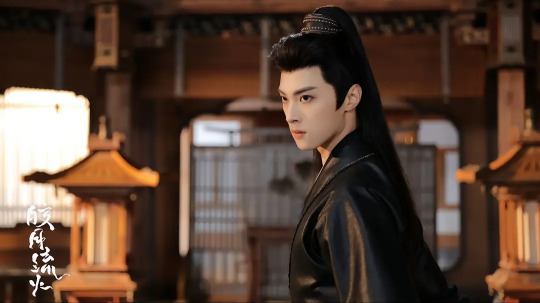
Whumpee: Ying Shi/Bai Chen/Tang Yan portrayed by Lin Ze Hui
Ep 1 - Covers scar | Scar reveal, scar touched, scar opened, winces, bleeding, made to taste his own blood.
Ep 2 - Wipes blood off mouth | Cut on the forehead with a shard
Ep 3 - Cut on the forehead with a shard, blood trailing down the side of his face (10/10), grabbed by the chin, head pushed away, scolded, made to kneel and strip to receive punishment, scars on his back, whipped | still being whipped, pale, winces, sweating, several large cuts on his back, bleeding, belittled | Blood staining white clothes.
Ep 4 - Shirt removed to reveal the cuts on his back, made to lie down, wound treated, winces.
Ep 5 - none.
Ep 6 - Fought | Takes drug that binds him to his master.
Ep 7 - Weak, loosening collar of his clothes, blurry vision, leaning against table | Fought, blurry vision, struggling to focus, protected, sword to the chest then to the neck, chin tilted up with blade, weak.
Ep 8 - None.
Ep 9 - Restless, can't sleep | Blade to his neck.
Ep 10 - None.
Ep 11 - Stabbed in the back of his neck with three needles, trembling.
Ep 12 - Struggling to walk, weak, in pain, leaning over table, clutches chest, meditates to ease the pain | Sweating, injury reveal (three needles visible under his skin).
Ep 13 - Fought, kicked in the back, spits blood, falls to the ground, struggling to get up, scratches on his face, kicked in the chest, falls to the ground again, spits blood, cut on the cheek, blood on his face and neck | steps in front of loved one and gets stabbed in his right shoulder, blade removed abruptly, bleeding, clutches wound, falls onto his knees.
Ep 14 - Protected, concerned for loved one | Treated, needles removed from his skin, spits blood, pale, blood dripping from his lips.
Ep 15-19 - None.
Ep 20 - (in past) rescued (off screen), scratches and cuts on his face, talks about his unwillingness to live | (in past) watches his friend die, crying.
Ep 21 - (in past) x mark cut onto his left shoulder, crying.
Ep 22 - Force™ pushed away | Imprisoned by loved one | Gets up abruptly, sudden pain, winces, forced to sit back down, in pain, clutching chest, feeling withdrawals from drug, meditates to ease the pain.
Ep 23 - Fought, jumps off cliff after lover, saves lover by pushing her to safety but falls off cliff.
Ep 24 - Limping | Can't stand too long and has to sit, concern for him.
── ⋅ ⋅ ── ⋅ ⋅ ── ⋅ ⋅ ── ⋅ ⋅ ── ⋅ ⋅ ── ⋅ ⋅ ── ⋅ ⋅ ── ⋅ ⋅ ── ⋅ ⋅ ── ⋅ ⋅ ── ⋅ ⋅ ──
#asian whump#whump list#whumplist#whump#cdrama#chinese drama#secrets of the shadow sect#皎月流火#lin ze hui
60 notes
·
View notes
Text
[Hanfu · 漢服]Chinese Song Dynasty(960–1279AD)Emperor Traditional Official Hanfu











The official uniform of the Chinese Song Dynasty emperor in "Serenade of Peaceful Joy"




【Historical Reference Artifacts】:
Portrait of Emperor Taizu (21 March 927 – 14 November 976)of Song Dynasty, kept in the National Palace Museum

Portrait of Emperor Yingzong (16 February 1032 – 25 January 1067) of Song Dynasty, kept in the National Palace Museum

Many people may curious about why the emperors of the Song Dynasty did not wear the classic yellow, but instead wore white or red round-necked robes.
During the Han and Tang dynasties, yellow was exclusively associated with imperial authority. According to the theory of "the Wuxing (Chinese philosophy)"which is Fire, Water, Wood, Metal, and Earth, yellow represented the center and symbolized the legitimacy of imperial power. However, during the Song Dynasty, due to political changes, Emperor Taizong decided to shift this tradition and adopt red as the new symbolic color for the dynasty. The court officials supported this change and provided various justifications, such as the theory of fire's virtue and the idea of red being a color of celebration, among others.
During the Han and Tang dynasties, yellow was exclusively associated with imperial authority. According to the theory of "the Wuxing (Chinese philosophy)"which is Fire, Water, Wood, Metal, and Earth, yellow represented the center and symbolized the legitimacy of imperial power. However, during the Song Dynasty, due to political changes, Emperor Taizong decided to shift this tradition and adopt red as the new symbolic color for the dynasty. The court officials supported this change and provided various justifications, such as the theory of fire's virtue and the idea of red being a color of celebration, among others.
【Emperor Taizu of Song Dynasty<Zhao Kuangyin/赵匡胤>】
Emperor Taizu of Song (21 March 927 – 14 November 976), personal name Zhao Kuangyin, courtesy name Yuanlang, was the founding emperor of the Song dynasty of China. He reigned from 960 until his death in 976. Formerly a distinguished military general of the Later Zhou dynasty, Emperor Taizu came to power after staging a coup d'état and forcing Emperor Gong, the last Later Zhou ruler, to abdicate the throne in his favor.
During his reign, Emperor Taizu conquered the states of Southern Tang, Later Shu, Southern Han, and Jingnan, thus reunifying most of China proper. To strengthen his control, he lessened the power of military generals and relied on civilian officials in administration. He was succeeded by his younger brother, Zhao Kuangyi (Emperor Taizong).
Early life
Born in Luoyang to military commander Zhao Hongyin, Zhao Kuangyin grew up excelling in mounted archery. Once, riding an untamed horse without a bridle, he knocked his forehead on the wall above the city gate and fell off, but got right back up and chased the horse, eventually subduing it while going unharmed. In the mid-940s, he married Lady He on his father's arrangement. After wandering around for a few years, in 949 he joined the army of Guo Wei, a jiedushi (military governor) of the Later Han dynasty, and helped Guo quell Li Shouzhen's rebellion.
Career under Later Zhou(后周)
In 951, Guo Wei rebelled and created the Later Zhou dynasty. Because of his brilliant combat skills, Zhao Kuangyin was promoted to a palace guard commander. Chai Rong (Emperor Shizong of Later Zhou) frequently met Guo Wei and noticed Zhao Kuangyin's potential. Under his command, Zhao Kuangyin was made into a commander of the cavalry units. Under Chai Rong, Zhao Kuangyin's rise to power had begun.
Zhao Kuangyin's career started at the Battle of Gaoping, against the alliance of the Northern Han and Liao dynasties.
This rivalry started when Chai Rong ascended the throne and Liu Chong decided to work with the Liao dynasty. In the initial confrontation, the army's right flank, led by Fan Aineng (樊愛能) and He Hui (何徽), was defeated. Looking at the situation, Zhao Kuangyin and Zhang Yongde (張永德) led 4000 elite Palace troops to counter the Liao army. Zhao Kuangyin's exhortation for the loyalty to the emperor quickly strengthened morale. The small force held off the larger Liao army until reinforcements arrived. In the end, the successful counter repelled the Northern Han back to Taiyuan.
The victory raised Zhao Kuangyin up to the post of the grand commander of the palace guards, as well as reorganising and training them. More importantly, he developed the relations with other generals and officials related to the Chief of Palace, including Shi Shouxin, Wang Shenqi (王審琦), Yang Guangyi (楊光義), Wang Zhengzhong (王政忠), Liu Qingyi (劉慶義), Liu Shouzhong (劉守忠), Liu Yanrang (劉延讓), Mi Xin (米信), Tian Chongjin (田重進), Pan Mei, his brother Zhao Kuangyi, Shen Yilun (沈義倫), Lu Xuqing, Zhao Pu (趙普), Chu Zhaofu (楚昭輔). Within a few years, Zhao Kuangyin completely controlled the palace guards and even developed a set of officials under him with the people mentioned above.
Soon, he was promoted to a jiedushi (military governor), controlling most of the military power under Chai Rong. Nevertheless, he still had two rivals – Zhang Yongde (Guo Wei's son-in-law) and Li Chongjin (Guo Wei's nephew). In 959, after a trap[clarification needed] set by Zhao Kuangyin, Zhang Yongde was demoted. After the death of Chai Rong, the Later Zhou throne was left to his seven-year-old son Guo Zongxun, and the second rival, Li Chongjin, soon found himself lacking the political backing. As a result, Zhao Kuangyin was able to use his influence to transfer Li Chongjin to Yang Prefecture as a jiedushi.
Chenqiao Mutiny/陈桥兵变
Main article: Chenqiao Mutiny20th-century illustration of Zhao Kuangyin being proclaimed emperor by the army of the Later Zhou dynasty.
In 960, word reached the chancellor Fan Zhi that Northern Han and Liao dynasties were once again allied to invade them again. Without verifying the reliability of the hearsay, Fan Zhi sent Zhao Kuangyin to combat the alliance. After traveling 40 li, there was a clamour that a "prophet" saw two suns fighting, and that this meant the transfer of the Mandate of Heaven to Zhao Kuangyin. The story effectively spread around the army: there came discontent of the "command" of the young emperor and a shift of loyalty to Zhao Kuangyin. A few days later, when Zhao Kuangyin was drunk in his tent, all the troops had not slept the whole night; they got their weapons and started yelling. Zhao Pu and Zhang Kuangyi, who were guarding the tent, saw the situation and went into the tent to wake up Zhao Kuangyin. When Zhao Kuangyin came out, all the troops yelled, "The army is without a master, we are willing to make the general the new emperor." Allegedly, Zhao Kuangyin took the power reluctantly, only under the urging of his soldiers. The midnight mutiny of officers forcibly urged Zhao Kuangyin to the throne; but, when the officers presented him to the troops as their new commander-in-chief he refused the imperial nomination until they swore unconditional obedience to him as leader.[6] News of the rebellion soon reached the court and chaos erupted. The only person who thought about a resistance was Han Tong, but he was killed by one of Zhao Kuangyin's generals when he reached home.
Upon entering the capital to take his seat on the throne, Zhao Kuangyin made an executive order prohibiting the troops from looting the city or otherwise violating the rights of the population.
This coup would allow Zhao Kuangyin to become emperor in 960.With the gates opened for him, he became emperor with no resistance. Before the chancellor Fan Zhi could say anything, one of Zhao Kuangyin's generals pointed a sword at him and said, "We are without masters. Today, we must have an emperor." After the officials looked at each other and knew it was hopeless to resist; they all bowed down. With the court under control, Zhao Kuangyin was officially proclaimed emperor. The new dynasty's name, Song, was inspired by the army Zhao Kuangyin commanded in Song Prefecture.
After the declaration, Zhao Kuangyin sent the dethroned young emperor Guo Zongxun with his mother to the Western Capital (西京). He personally ordered the Zhao family to receive the Chai family into their family's care for generations.
As emperor
Emperor Taizu playing cuju with Zhao Pu, by the Yuan dynasty painter Qian Xuan (1235–1305)
In 960, Zhao Kuangyin helped reunite most of China proper after the fragmentation and rebellion between the fall of the Tang dynasty in 907 and the establishment of the Song dynasty. The plan set during Chai Rong's reign was to first conquer the north, then the south. During Emperor Taizu's reign, there was a change in strategy. He would conquer all the smaller states such as Later Shu, Southern Han and Southern Tang. The exception was the strong Northern Han in the north at Taiyuan supported by the Khitans of the Liao dynasty. Emperor Taizu's strategy was to win over the independent southern states[8] as the south was weaker than the north as the Liao dynasty supported Northern Han.
In 968, Emperor Taizu personally led the army against the Northern Han. At first, his forces tore through the defences and placed Taiyuan under siege, but was ultimately forced to retreat after he struck against the defences of the Northern Han with the Liao cavalry coming in to support.Portrait of Emperor Taizu, who founded the Song dynasty
Emperor Taizu established the core Song Ancestor Rules and Policy for the later Song emperors. He was remembered for his expansion of the imperial examination system such that most of the civil service were recruited through the exams (in contrast to the Tang where less than 10% of the civil servants came through exams). He also created academies that allowed a great deal of freedom of discussion and thought, which facilitated the growth of scientific advance, economic reforms as well as achievements in arts and literature.
Emperor Taizu is well known for bringing the power of the military under control, ending the era of the warlords, centralizing the state over regional commanders and so preventing anyone else rising to power as he did.[8] Upon becoming emperor, he invited the general officers to a lavish banquet, where he convinced them all to retire as military leaders or accept minor posts, in favour of enjoying extensive estates and generous retirement funds and benefits which he then offered them.At a certain point during the feast, the new emperor made a speech to the military officers assembled there, which he began by expressing his deep gratitude to each and all of them for placing him on the throne, and that now that he had the power to do so, he wished to reward them to the utmost of his ability; then he went on to say that he thought the present company would all understand that he could not feel at ease on his new throne, with them continuing in command of their various armies of troops: and, he said, that if they duly considered the ramifications of the matter, neither would they. He then sincerely promised that they and their families would live in happiness and harmony, if they accepted his offer to retire with the stated benefits: eventually, none of the generals refused his terms, and thus began a period of relative internal peace within the realm for the duration of the Song dynasty which he thus founded, also better securing the military forces for involvement with the rival surrounding empires.
Many Song and later sources record the story of the "Taizu's Oath", which forbade his successors from killing scholar-officials. However, this story might be a later construct.
Death and succession dispute
Tomb of Emperor Taizu in the Yongchang Mausoleum, Gongyi, Zhengzhou
Emperor Taizu reigned for seventeen years and died in 976 at the age of 49. Curiously, he was succeeded by his younger brother, Zhao Kuangyi (Emperor Taizong), even though he had two grown sons – Zhao Dezhao, the Prince of Yan (951–979), and Zhao Defang, the Prince of Qin (959–981). The traditional historical accounts place emphasis on the role Zhao Kuangyin's mother played in the decision which was made shortly after the Song dynasty was proclaimed (around 961). So for nearly his entire reign, it was known and accepted that Zhao Kuangyi would succeed him.
In folklore, the story known as "shadows by the candle and sounds from an axe" is very popular and suggests that Emperor Taizu was murdered by his brother, who was after the throne.After his death, Taizu was interred at the Yongchang Mausoleum, near Gongyi.
After Emperor Taizong, the line of succession passed on to his son and descendants rather than those of Emperor Taizu. However, when Emperor Gaozong (1127–1161) failed to produce an heir, he selected a descendant of Emperor Taizu to be his adopted heir to succeed him in 1161. After 1161, all the subsequent Song emperors were descended from Emperor Taizu through his two sons, Zhao Dezhao and Zhao Defang.
—————————–
📸Photo::©胶宗模玩jiaotoys(Chinese manufacturing historical figure model merchant)
🔗Xiaohongshu App:https://www.xiaohongshu.com/user/profile/5659f093589de33cb53e0083
—————————–
#chinese hanfu#Song Dynasty(960–1279AD)#Emperor Taizu of Song Dynasty#hanfu#hanfu accessories#hanfu_challenge#chinese traditional clothing#china#chinese#yuanlingpao#mens hanfu#mens headwear#胶宗模玩jiaotoys#漢服#汉服#中華風#Serenade of Peaceful Joy
123 notes
·
View notes